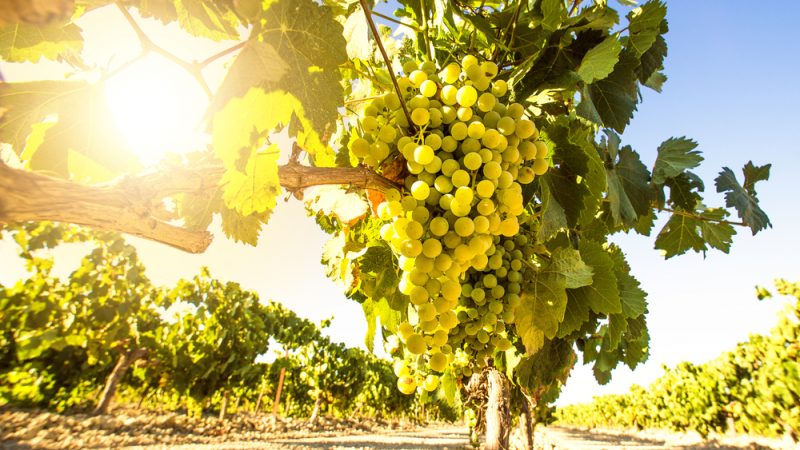
European wine harvests off to a mixed start
The harvest season has started early in most European vineyards, following an unprecedented summer of heatwaves and droughts. Conditions have brought mixed fortunes for producers, with some vines experiencing heat stress and others thriving due to lower disease rates.
“In most wine-producing regions, there is a three-week advance compared to a normal year,” Jérôme Despey, president of the chamber of agriculture of the Hérault department in southern France, told EURACTIV.
“As far as I’m concerned, I’ve never started so early, and I have been doing that for over 30 years. As early as 9 August for Chardonnay!” said the winegrower, based a few kilometres from Montpellier.
In Andalusia, in southern Spain, the white grape varieties of Jerez reached maturity at the end of July. Similar patterns have been seen across Portugal and Sicily.
Further north, in Charleroi in Belgium, winemaker Henri Larsille is excitedly preparing to harvest his Muscaris, a white variety of grape, in two to three weeks.
“We will be 15 days ahead of schedule. And this year, with the good weather and the perfect health of the vines, all the elements are combined”, the secretary of the Association of Winegrowers of Wallonia rejoiced. This year, he expects to multiply his production by three.
Hérault’s Despey said the sanitary situation would be “exceptional”.
Extended heat and drought conditions prevent fungi and other moulds from developing in the humidity, a welcome state of affairs following the catastrophic year of 2021, where episodes of frost and diseases, including powdery mildew, devastated a good part of the European vineyards.
In terms of quality, the absence of diseases that can strongly alter the taste of wines is good news for the industry and consumers. A healthy harvest allows the aromas to develop better and lead the grapes to their maturity in terms of taste.
But if Belgians and northern French winegrowers are happy, especially in Champagne, where everything is going well, it is not so much the case for winegrowers in the south.
Decrease in production
Although vines are typically well adapted to heat, the frequency and intensity of extreme weather events can stress the plant.
This year’s dry spring and early heatwaves – as early as June in Europe and then repeated in July and August – have resulted in the disruption of the biological cycle: leaves turning yellow and falling early and the weight of the grapes decreasing.
In Tuscany, Italy’s iconic wine region, the vice president of the Chianti Classico consortium, Sergio Zingarelli, told Reuters: “We have smaller grapes and we expect the number of grapes to be lower than the average of recent years.”
Producer Paul Symington told The Drinks Business magazine that he thinks it will be “one of the smallest harvests ever recorded in the Douro.” The Douro is a protected designation of origin (PDO) that produces, among other things, port wine in northern Portugal.
A challenge facing more and more growers is the need for a higher quantity of grapes to achieve the same levels of wine production. Despey noted that “for the past few years, climate change has had a real impact on the production potential in all the wine-producing countries of the European Union,” adding that “we have increasingly smaller harvests.”
In France, after a historically poor harvest in 2021, production is expected to reach 44 million hectoliters, dependent on weather conditions in the coming weeks.
“For the moment, we are in the low average of the last few years,” Despey said.
Mitigation and adaptation
While the mid-August storms and upcoming rainfall may provide relief for some late grape varieties, the exceptional drought of the past few months will have an impact on European production.
“The problem is that these storms are often very localised, and there is a loss: in a few hours, a lot of water runs off. The soil doesn’t have time to absorb it,” said Despey, adding that it is key for producers to learn to mitigate and adapt to climate change.
At the end of summer, the winegrowers are already looking at the sky and thinking about next year. If the lack of rain persists, the vines will find themselves dry in the spring, with no water reserve, for the next cycle. For Despey, research must be focused on new, more resilient grape varieties, as well as on ways to facilitate irrigation.
Only 10% of the surface area is irrigated in France, compared to 50% in Spain and 26% in Italy. This number rises to 90% outside Europe, in South Africa, Australia, and New Zealand.
“This makes it possible to be more resilient in the face of drought and to maintain production capacity,” Despey stressed.
SOURCE: EURACTIV.COM
